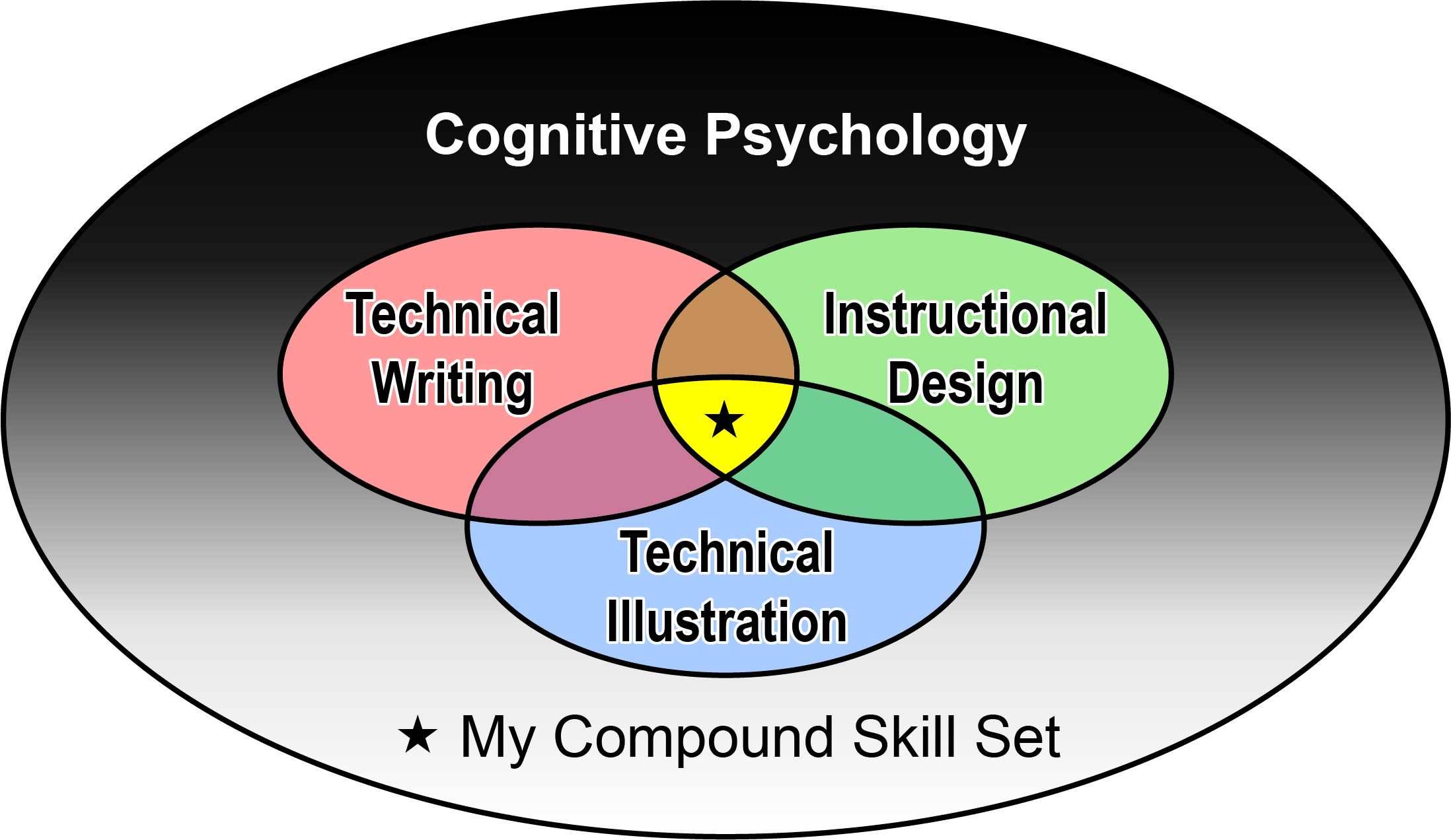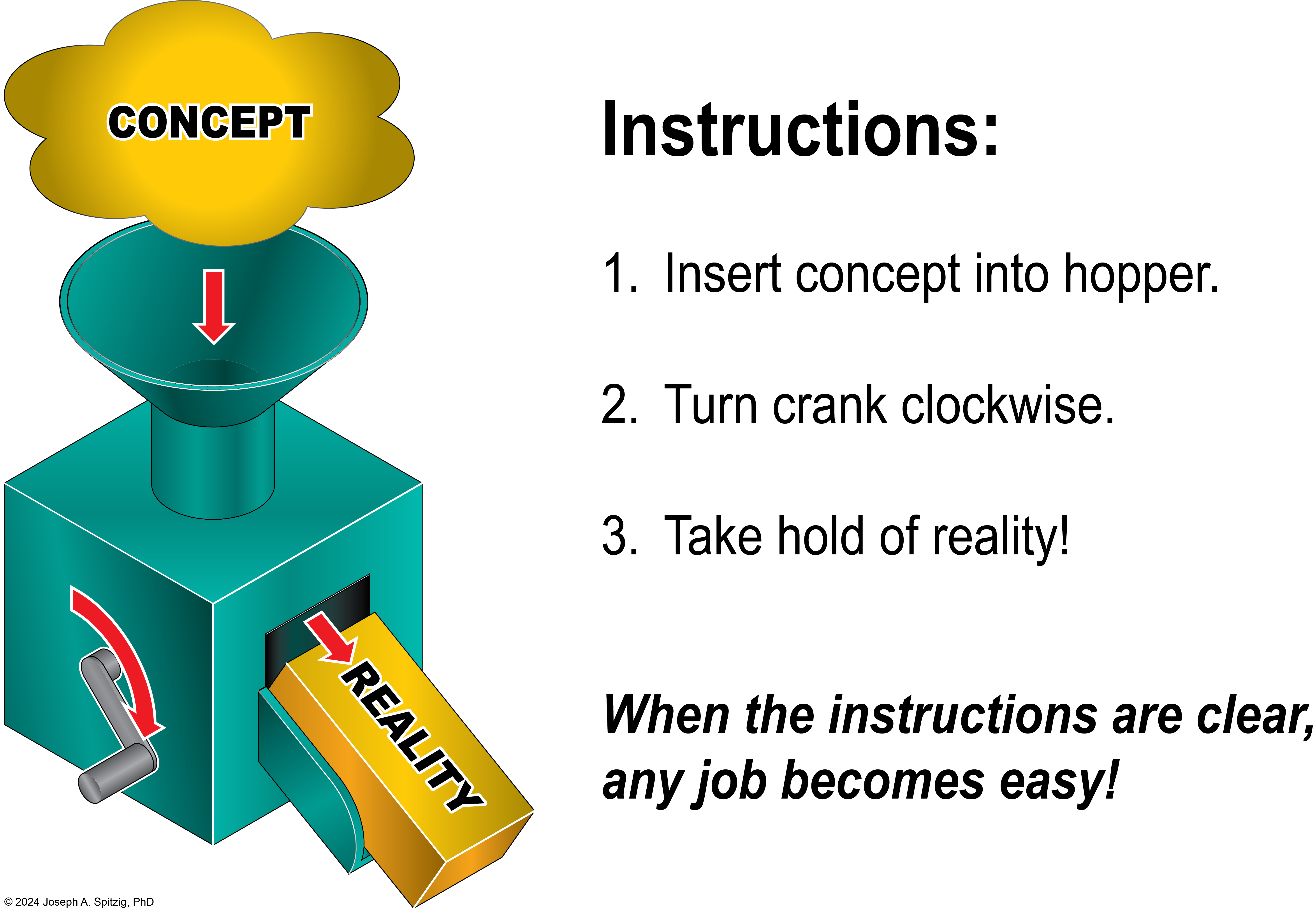Greetings!
 I'm Dr. Joe.
I'm Dr. Joe. I develop high-quality
Instructional Materials to provide information that others need in order to do their jobs competently and confidently. I'm not just a
Technical Writer. I'm not just an
Instructional Designer. I'm not just a
Technical Illustrator. Indeed, I'm all three, and at a very high level. I can integrate all three skill sets into a single, all-inclusive role. Plus, in developing instructional materials, I apply principles of
Cognitive Psychology to ensure that the methods and techniques that I employ are research-based and scientifically sound.

I have broad experience developing instructional and technical materials in a variety of industries, primarily in the manufacturing sector. I focus on mechanical, electromechanical, and automated products, systems, controls, and user interfaces. Subject matter has ranged from automated paper-making and multi-station printing systems, CNC machine tools, electronic medical-diagnostic systems, and material-handling and conveyor systems to automated chemical-processing systems and rocket-engine avionics.
I have a Bachelorís degree in Industrial Education, a Masterís degree in Teaching and Learning with Technology, and a PhD in General Psychology with Emphasis in Cognition and Instruction. I also have formal training in Technical Photography, Instructional Design, and Website Design.
Toward a Successful Project

The End User
Since my subject matter, both as a Technical Writer and as an Instructional Designer, comprises mechanical, electromechanical, and automated products, systems, controls, and user interfaces in industrial settings, I am concerned primarily with
adult learners, the purview of andragogy. Like every one of us, the end user is a living, breathing human being trying to do a job, earn a living, and support his or her family. I identify and empathize with the end user!
In keeping with Ryan and Deciís Self-Determination Theory, I respect and support the end users' fundamental psychological needs for autonomy, competence, and relatedness. By developing technical and instructional materials with respect for these needs, I appeal to the end users' intrinsic motivation to learn and to perform competently and confidently. To the extent that the end users' motivation is extrinsic, however, I facilitate the movement of their behavioral regulation from external to integrated, whereby they increasingly recognize their own locus of causality as internal.
At the inception of a documentation or training project, it is essential to determine the needs of the end users:
- What do they likely already know?
- What will they likely need to have explained?
- What problems have the end users encountered when attempting to do the job in the past?
- What resources are available to help the end users master the subject matter and gain proficiency?
Identifying Source Information
Even an expert technical writer or instructional designer cannot perform well in a vacuum any better than anyone else. He or she typically begins a project with limited pre-existing knowledge of the product or system to be covered. In order to get the project off on the right foot and develop high-quality instructional materials on schedule and on budget, it is therefore essential that source information be provided in a timely manner. Waiting interminably for requested information takes far longer than completing the actual work itself and severely limits what remains possible as the deadline approaches.
Subject-matter experts invariably have urgent conflicting priorities on their plates, and supporting documentation or instructional efforts tends to be relegated to the back burner. It is therefore necessary for management to set a high priority on the instructional project and to make certain that all of the members on the project team are fully aware both of that priority and of the deadline.
Begin by providing contextual information to get the technical writer or instructional designer oriented to the product or system. Allow informational meetings to be recorded so that the technical writer or instructional designer can refer back to them to recall precisely what was said. To enable the technical writer or instructional designer to ferret out details with minimal assistance, provide direct access to repositories of reference information, such as engineering drawings and data bases (as well as navigational instructions for unfamiliar systems).
Beginning the Project
Before defining a scope of work for the project, it is necessary to analyze the audience and the subject matter to be covered. Then an outline of topics and subtopics can be constructed, pre-existing graphics that can be repurposed should be identified, and additional graphics to be generated can be determined. Next, the amount of time required to draft the text, generate new graphics, and integrate the various elements into a coherent form can be estimated. Only then can a realistic schedule and deadline be established. As experience shows, however, circumstances do not always allow the luxury of this natural progression to unfold, and a more expedient route must sometimes be pursued.
Precisely how much text and how many illustrations will best enable end users to assimilate, comprehend, and apply the subject matter can seldom be anticipated at the inception of a project. Sometimes more is needed, sometimes less, and sometimes something completely different from what was initially conceptualized. It is therefore prudent to allow the technical writer or instructional designer enough latitude to make such determinations as the project progresses. He or she will discuss these issues with the other members of the project team and come to a mutual agreement.
Moving Forward . . .


 I'm Dr. Joe. I develop high-quality Instructional Materials to provide information that others need in order to do their jobs competently and confidently. I'm not just a Technical Writer. I'm not just an Instructional Designer. I'm not just a Technical Illustrator. Indeed, I'm all three, and at a very high level. I can integrate all three skill sets into a single, all-inclusive role. Plus, in developing instructional materials, I apply principles of Cognitive Psychology to ensure that the methods and techniques that I employ are research-based and scientifically sound.
I'm Dr. Joe. I develop high-quality Instructional Materials to provide information that others need in order to do their jobs competently and confidently. I'm not just a Technical Writer. I'm not just an Instructional Designer. I'm not just a Technical Illustrator. Indeed, I'm all three, and at a very high level. I can integrate all three skill sets into a single, all-inclusive role. Plus, in developing instructional materials, I apply principles of Cognitive Psychology to ensure that the methods and techniques that I employ are research-based and scientifically sound.
